The power of Jyotirlinga worship is immense and has been a part of Hindu spiritual tradition for centuries. Jyotirlinga are the twelve sacred shrines to Lord Shiva representing the manifestation of him as a cosmic pillar of light. These twelve energy vortexes, known as Jyotirlingas, emanate from the inner core of the Universe and open up into the realm of higher consciousness. By worshipping these shrines, one can be blessed with spiritual and material prosperity, enlightenment, good fortune, and liberation from the cycle of birth and death.Among his numerous forms of worship, the 12 Jyotirlingas hold a special significance. These sacred temples represent manifestations of Lord Shiva's divine energy and are revered by millions of devotees across the globe. In this article, we delve into the intriguing aspect of online worship of the 12 Jyotirlingas, while also discovering the temples where these divine deities reside.
Lord Shiva 12 Jyotirlinga Temples, Importance Of Dwadasa Jyotirlingas Pooja
The twelve Jyotirlingas are located in various parts of India and are considered to be the most sacred places of worship. Worshipping and making offering or daan at these temples can bring about immense divine blessings. Some of the blessings one can receive include knowledge, removal of obstacles, protection, abundance, health, and prevention of untimely death. It is believed that when we invoke the positive energies of these power centers, the vibrations are spread all over the world and bring peace, harmony, and well-being to the entire Universe.
The importance of 12 Jyotirlinga Daan can’t be underestimated. Devotees who make offerings at these temples can receive great blessings from Lord Shiva himself. By making a daan, you can increase your spiritual growth and attract abundance into your life. It is believed that the presence of Lord Shiva at Jyotirlingas brings spiritual healing and protection from negative energies.With the online worship of the Jyotirlingas, devotees can seamlessly engage in prayers and rituals, despite geographical boundaries. We delve into the virtual pooja offerings available, enabling worshippers to participate through live-streaming options, offer online Prasad (sacred food offering), and seek divine blessings through dedicated digital portals. Experience the unison of technology and spirituality as devotees connect with the divine energy of Lord Shiva.
No matter what your spiritual goals may be, visiting and worshipping the 12 Jyotirlingas is sure to bring you blessings and a closer connection to the divine. If you are looking for an easy and powerful way to access the powers of divine consciousness, then Jyotirlinga worship is the best choice. The power of this form of worship is undeniable and can bring about immense spiritual benefits.
Kedarnath Jyotirlinga
Kedarnath Jyotirlingam of Mahadev temple is one of the twelve Jyotirlinga shrines of Lord Shiva and situated in the Rudraprayag district of Uttarakhand in India. The temple is situated in the foothills of the Himalayas and is situated in an elevation of about 3,500 meters above sea level. It is believed to be one of the most ancient shrines of Lord Shiva. Hindus from far off places come to this temple to offer prayers and receive blessings from Lord Shiva. It is believed that Lord Shiva appeared in the form of a Jyotirlinga and declared his presence at this shrine. The temple is also considered to be one of the shrines of Panch Kedars. The temple structure of Kedarnath shrine is made up of granite stones. The main shrine is enclosed with a pillared hall. There is an added attraction of a huge statue of Nandi, the bull-god, at the entrance to the temple. Inside the temple there is a Lingam, the symbol of Lord Shiva. The main temple is surrounded by smaller temples dedicated to Nandi, Arjuna, Bhima and Sudama, among others. One can also find shrines dedicated to Vishnu and Patanjali. It is believed that Pandavas set out to seek Lord Shiva’s blessings to clear their sins of Garuda yuddha. During their journey, Lord Shiva transformed himself into a bull to hide in the ground from Pandavas. Later, the top part of the bull-shaped body was visible before Pandavas, and hence the temple was named Kedarnath. Every year, a mega religious gathering is held at Kedarnath shrine for over two months, which begins in late April. It is believed that during this period, Lord Shiva bestows blessings upon devotees who offer prayers with utmost devotion.
✪ Which Jyotirlinga You Should Worship
Somnath Jyotirlinga in Gujarat is the first Jyotirlingam among the twelve Jyotirlingam shrines of Lord Shiva in India. It is one of the most revered Hindu temples in India and is considered to be one of the holiest pilgrimages in India. It is believed that worshipping at this temple can bring prosperity, knowledge and wisdom to devotees. The temple of Somnath is located on the banks of Arabian Sea in the Prabhas Patan city. The temple is dedicated to Lord Shiva and is a symbol of the great power and holiness of Lord Shiva. Somnath Jyotirlinga is believed to be the first among the twelve Jyotirlingam temples in India. According to Hindu mythology, Somnath Jyotirlinga is one of the 12 most sacred Jyotirlinga shrines dedicated to Lord Shiva. This temple has been destroyed and rebuilt several times, and is currently undergoing a major renovation program to restore its ancient splendor. Worshipping at this temple is believed to be beneficial for the devotees in many ways, such as attaining prosperity, physical and mental health, knowledge and wisdom. The rituals and ceremonies performed at this temple involve chanting of Vedic mantras, rituals of worship, performance of various chants and offerings to Lord Shiva. The Somnath temple is also closely associated with various legends related to Lord Shiva, which adds to its divine power and holiness. Devotees keep visiting this temple throughout the year, seeking blessings and offering their prayers to Lord Shiva.
Mahakaleshwar Jyotirlinga
Mahakaleshwar Jyotirlinga is one of the 12 Jyotirlinga temples of Shiva and is located in Ujjain, Madhya Pradesh. This ancient temple dedicated to Lord Shiva is considered to be one of the most sacred temples in India, and attracts pilgrims and devotees from all over the world. The sanctum of the temple is situated below ground level and has a five-storey high tower known as the 'Mahakal Vimana', topped with a golden image of lord Shiva.The main deity of the temple is Lord Shiva in the form of Mahakaleshwar which is said to be one of the 12 Upa-lingas of Lord Siva, the main Jyotirlinga being located in the nearby temple of Omkareshwar. The temple complex also features an ancient Shikhara, tank and smaller shrines dedicated to various gods and goddesses. Every year a grand fair is held at the temple on the day of Mahashivratri with thousands of pilgrims participating from all over India and even abroad. Devotees offer their prayers to Lord Shiv and seek his blessings for a successful life. This temple is a true testament to the glory of Lord Shiva and the devotion of his followers for centuries.
Omkareshwar Jyotirlinga
Omkareshwar Jyotirlinga is one of the twelve revered jyotirlingas in India, located in Khandwa district of Madhya Pradesh. It is also known as 'Shiva's Egg', the symbol of fertility. This temple is situated in the Mandhata Island of Narmada River, near the convergence of Narmada and Kaveri rivers. It is believed that worshipping of Omkareshwar can grant wishes of success in career, good luck, prosperity and peace. The sacred temple is built in Shikhara style, with beautiful carvings and pillars. Inside the temple is the sacred Shivalingam, which is made of Donpatta, an indigo dye recited with mantras. It is believed that this lingam is so ancient that it has no physical shape and is always worshipped on the spot by its devotees. Devotees circumambulate the temple, offering prayer and puja with coconut, flowers, incense and lamps. There are also two unique shrines, one for Mother Narmada and another for Lord Shiva. The temple is also famous for its unique system of ahimsa, which prevents any animals from being killed within the premises. Many devotees of Lord Shiva offer prayers here in the hope of fulfilling their wishes and enjoying peace in their lives. Despite being an ancient temple, it has attracted increased attention in recent years, due to the cultural and religious significance it has gained.
Baidyanath Jyotirlinga
Baidyanath Jyotirlinga is one of the twelve Jyotirlingas, shrines of great reverence in Hinduism, located in Deoghar, Jharkhand, India. The temple is known by different names such as Baba Baidyanath dham, Baba Baidyanath Temple, Baidyanath Ji, and Vaidyanath. One of the twelve Jyotirlingas of Shiva, the temple is located in the Someshwar Hills near the Basukinath Temple in Deoghar. The temple holds great importance for devotees of Lord Shiva and is situated on the banks of the Mayurakshi River. Baidyanath Temple is one of the oldest temples in India and has a history of more than 1000 years. The temple is believed to have been built during the reign of the great King Bhavrao Dev in the 11th century. The main idol of Lord Shiva in the temple is in the form of a lingam, which is placed on a yoni (circular base symbolizing the divine female energy). The temple also features several other deities such as Lord Vishnu, Lord Ganesha, Goddess Parvati, and others. Devotees from all over India visit this shrine to offer prayers to Lord Shiva and to seek his blessing. Every year on the occasion of Mahashivratri, a grand fair, known as the 'Shravani Mela' is held at Baidyanath Temple in which millions of devotees from all over India come to visit the temple and attend the ceremonies.
Bhimashankar Jyotirlinga
Thousands of Hindus gather at Bhimashankar Jyotirlingam every year to pay their respects to the Shiva Linga here. This temple is situated at the Sahyadri Mountains in Pune district, Maharashtra. Bhimashankar is one of the twelve jyotirlingas revered by the Hindus as a representation of Lord Shiva.The Bhima River originates in the nearby Bhimashankar hills. It is believed that the linga of Lord Shiva, symbolized by this jyotirlinga, is the center of Bhimashankar Mandal, consisting of four mountains- Brahmagiri, Nilgiri, Kalasgiri and Vishalgiri.The origin of this picturesque temple dates back to Ramayana. It is believed that Ravana, the demon king, worshiped Lord Shiva here. Later, the Bhimashankar Temple was constructed on the historical sites and includes a main shrine dedicated to Bhimashankara, along with other small shrines and floors. For devotees who come here to seek a blessing of success and happiness, it is believed that taking a dip in Kushavart Teerth is essential. This is an ancient-style pool near the temple and is considered as sacred as Ganga and Yamuna.Bhimashankar is also a popular destination for adventure enthusiasts. The surrounding forests offer stunning views for trekkers. The temple is also home to rich biodiversity and a significant part of the Western Ghats.Vibrant fairs and celebrations take place every year in the month of February or March on the occasion of Shivratri. This temple is an excellent example of Indian culture where believed and faith converge to bring a profound meaningful experience.
Ramanathaswamy Jyotirlinga
Ramanathaswamy Jyotirlinga is located in Rameshwaram, Tamil Nadu. It is one of the 12 jyotirlingas and is also known as Rameshwaram Jyotirlinga. This holy temple is dedicated to Lord Shiva and houses one of the twelve jyotirlingas. It is believed that worshipping Shiva at this temple will bring salvation. It is also believed that Lord Rama, an avatar of God Vishnu prayed to Shiva here to absolve his sins of killing Ravana. According to local legends, it is also said that Lord Hanuman brought an Linga from Mount Kailash at the orders of Rama and it was consecrated with sand brought from many holy rivers from all over India. It is said that it is one of the ‘Chardhams’ or the four most important pilgrim sites fro Hindus in India. This temple complex is spread over 15 acres and has 22 wells within its complex which represents the 22 arrows that Rama used to dispel his sins. The temple also includes a sea facing 'Gopuram' which has a total of 40 towers. The temple is also home to a great number of shrines and mandaps. Pilgrims also come here to seek blessings by offering prayers to some idols of Vishnu and Lakshmi which are placed in the central sanctum of the temple. The Ramanathaswamy Jyotirlinga is revered as one of the holiest sites in India and millions of devotees visit this temple every year to seek the blessings of Lord Shiva and attain salvation.
Grishneshwar Jyotirlinga
Grishneshwar Jyotirlinga is considered to be the one of the holiest sites for Hindus and is an important pilgrimage destination for people of the faith across India. The temple is dedicated to Lord Shiva, one of the main deities of the Hindu pantheon. The temple is located about 12 km from the Daulatabad fort and is one of the 12 jyotirlingas, shrines where Lord Shiva is believed to have appeared in the form of a light. According to legend, a holy ascetic called Bhalchandra was once walking in the Deccan region, when he noticed a bunch of cockroaches lodged in the hollows of a banyan tree. He was instantly filled with awe and was amazed when the cockroaches revealed themselves to be the manifestation of Lord Shiva. Bhalchandra was overjoyed and built a temple in that very same spot out of gratitude for the divine appearance. Over time, Grishneshwar Jyotirlinga has become renowned the world over as a powerful place of prayer and ritualistic worship. It is believed to be the only Jyotirlinga shrine to have survived the invasion of the Mughals, as it was well-hidden and guarded by Shiva devotees. The temple is commonly visited throughout the year by thousands of pilgrims, although the best time to visit it is during Shivratri, the celebration of the marriage of Shiva and Parvati. On this day, the atmosphere is electric and the entire temple reverberates with the sound of chants and prayers as devotees from all over the world come and seek the divine blessing of Lord Shiva.
Nageshwar Jyotirlinga
Nageshwar Jyotirlinga is located in Dwarka, Gujarat. It is one of the 12 jyotirlingas, and it is considered to be the most sacred of all. It is believed to be the home of Lord Shiva, and its existence has been mentioned in many religious scriptures. According to Shiva Purana, Lord Shiva, himself, was pleased with Nageshwar and established it as Jyotirlingam. It is a celebrated pilgrim spot and a large number of devotees visit the temple to seek blessings from Lord Shiva. Nageshwar Jyotirlinga is decorated with a golden Lingam during the festive season. The shrine is known for its 'Nagas' or hooded cobras which flanked the Shiva Lingam, making it unique amongst all other jyotirlingas. Thousands of devotees come to take the sacred bath in the Narmada River, and pay their respects to Lord Shiva with flowers, incense sticks and bells. The temple holds many festivals and havans throughout the year, most prominent being the Mahashiv Ratri. People from all parts of the country throng to the temple to attract divine blessings from Lord Shiva and Maa Parvati. Nageshwar Jyotirlinga is one of the most widely visited religious sites in India and is definitely a must-visit for every devotee of Lord Shiva.
Mallikarjuna Jyotirlinga
Mallikarjuna Jyotirlinga is situated in the hilly area of Srisailam is considered as one of the twelve Jyotirlings in India. Mallikarjuna temple located in the interior part of India which is accessible only through a motorway connected from Hyderabad. This temple is situated on the bank of the Krishna River, the main temple was built by Yudha Vishnuvardhana in 1100 CE (Common Era). The temple is adorned with a huge Nandi placed at the entrance of the temple sthala. This Jyotirlinga is dedicated to the deity of Lord Shiva, also known as 'Mallikarjuna Swamy'. It is said that when Lord Shiva and Parvati were about to have a cosmic union, the gods were worried that it would cause destruction to the world and so, Lord Vishnu severed the union of Shiva & Parvati into parts, scattering them across India, and one of the major parts that was severed was at Mallikarjuna, situated at Srisailam. Every year thousands of devotees visit this holy place for spiritual purpose. Mallikarjuna is revered in the Shaiva tradition as a Jyotirlinga, lingam of light, one of the twelve revered by the eight indologist saints Tukaram, Jnana deva, Chokha Mela, Namak Kumara, Sundardea, Manik Prabhu, Vishwantha and Sadashiva.
Trimbakeshwar Jyotirlinga is one of the most important and highly revered temples of the Hindus. Located in the picturesque district of Nashik, Trimbakeshwar enshrines one of the 12 jyotirlingas in India. Also known as Tryambakeshwar, it is believed to be the home of Lord Shiva and the origin of the Godavari river. The temple complex houses the Svayambhu linga of Lord Shiva, and is said to be the site of the holy Trinity Brahma, Vishnu and Maheshwara. The temple is surrounded by three peaks representing those gods, and these are home to the sacred shrines of Lord Ganesha, Lord Kartikeya and Goddess Parvati. An important feature of the temple is the ‘Kund’ or tank where devotees take a dip in its holy waters to purify themselves. Believed to have been built by the Pandavas of the Mahabharata period, Trimbakeshwar temple is known for its architectural grandeur. It is adorned by intricate sculptures and carvings depicting the various forms of Lord Shiva and his avatars. The inner sanctum is home to three lingas representing Brahma, Vishnu and Shiva. The temple also hosts several religious and spiritual events throughout the year, drawing a large number of devotees from across the country. The temple has gained immense popularity due to its spiritual significance and is visited by devotees all year round. A must-visit destination for all devotees, Trimbakeshwar Jyotirlinga is a revered pilgrimage site, offering peace and spiritual fulfilment to all those who visit.

Lord Shiva and Parvati Wallpapers
★| Home | Astrology | Tarot | Lenormand Divination | Vastu Shastra | Zodiac Gemstones | Celebrity Horoscopes | Yoga | Tantra | Occult | Mantra | Healing | ★
दिव्यतत्त्व All Rights Reserved. Copyright © Divyatattva India Buy Indian God Shiva Posters, Online Store For Shiv Idols, Shiva Parvati Moorti, Shop Online Photo frame of Hindu Gods, Hindu Gods AI Artwork 2023-2024



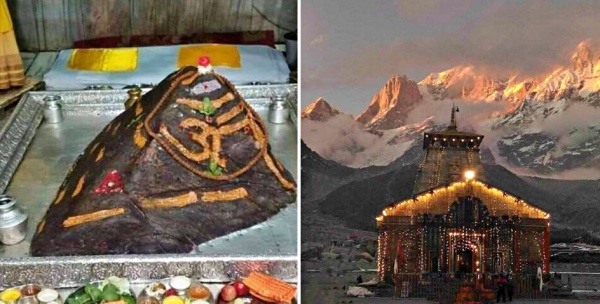
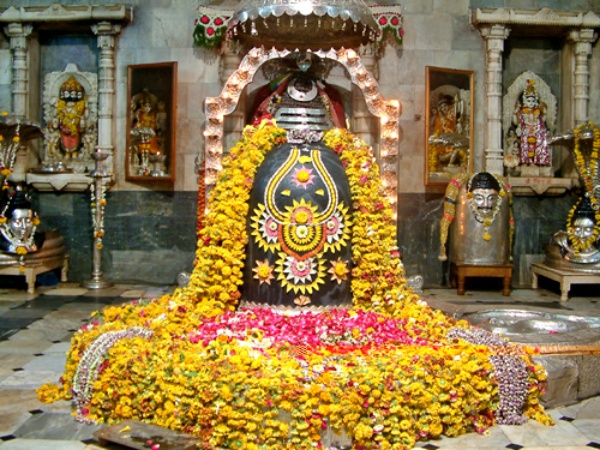
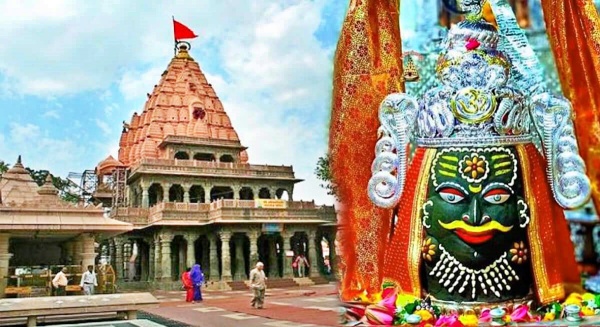
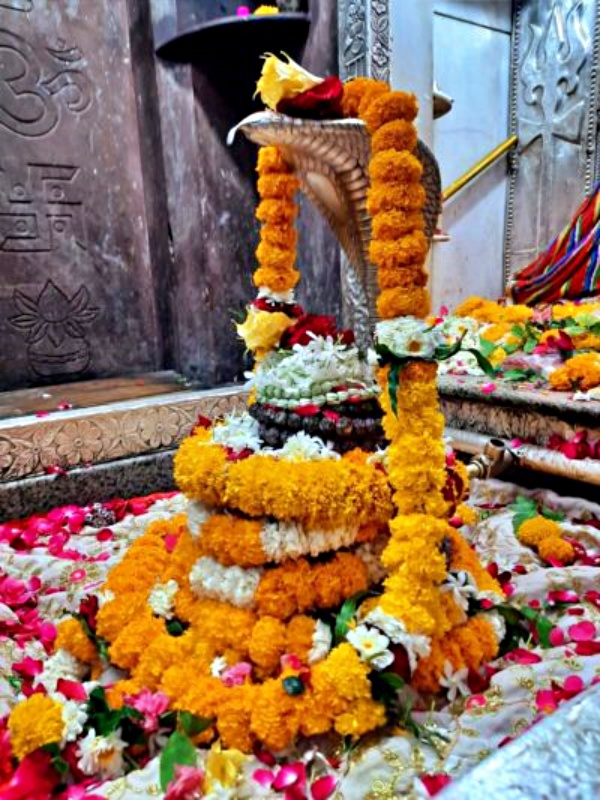
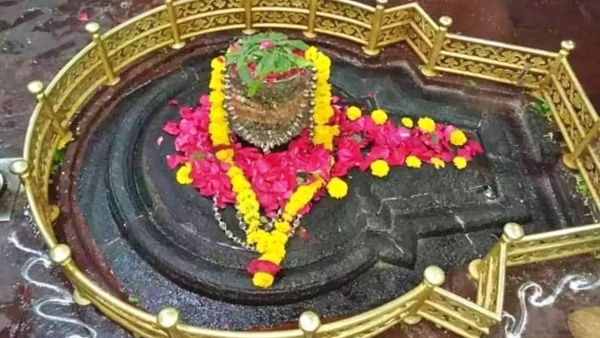









0 Comments